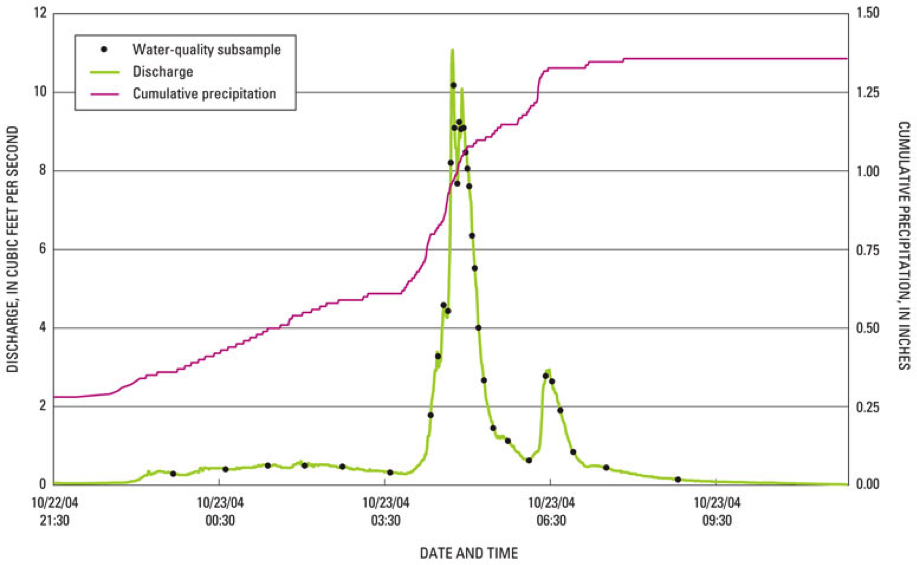Stream and river flow is dynamic in that it is continuously changing temporally and spatially. The changes in flow are primarily influenced by rainfall runoff within the particular watershed (USGS 2013c). Rainfall causes rivers to rise even if the rainfall occurs very far upland of the estuary's watershed and eventually the water drains into the estuary (USGS 2013c). The extent and depth of the estuary influences the size of the river. A larger river will have a larger outflow point and a smaller river will have a smaller outflow point. In this way, rainfall events cause varying effects on smaller and larger estuaries. A rainfall event on a small watershed may cause the river to rise and fall rapidly with a much larger base flow than normal (USGS 2013c). In a larger watershed, a rainfall event may cause the river to rise slowly over a longer time period and flooding may last for a number of days before all of the water drains into the estuary (USGS 2013c).

The rate of flows reaching an estuary will vary depending on the amount of rainfall upstream as well as the characteristics of that stream and of that estuary. Some estuaries have a direct river source and are called river-dominated estuaries and some have indirect sources from multiple streams and runoff points and are called lagoons (Montagna et al. 2013). Major estuaries have both direct and indirect sources of flows.
River and stream flows can be studied using USGS method of using a hydrograph (USGS 2013a). A hydrograph is a chart that shows the river stage, the height of the water above an arbitrary altitude, and the streamflow, amount of water often calculated in cubic feet per second, and can also show other parameters including rainfall and water quality data (USGS 2013a).
